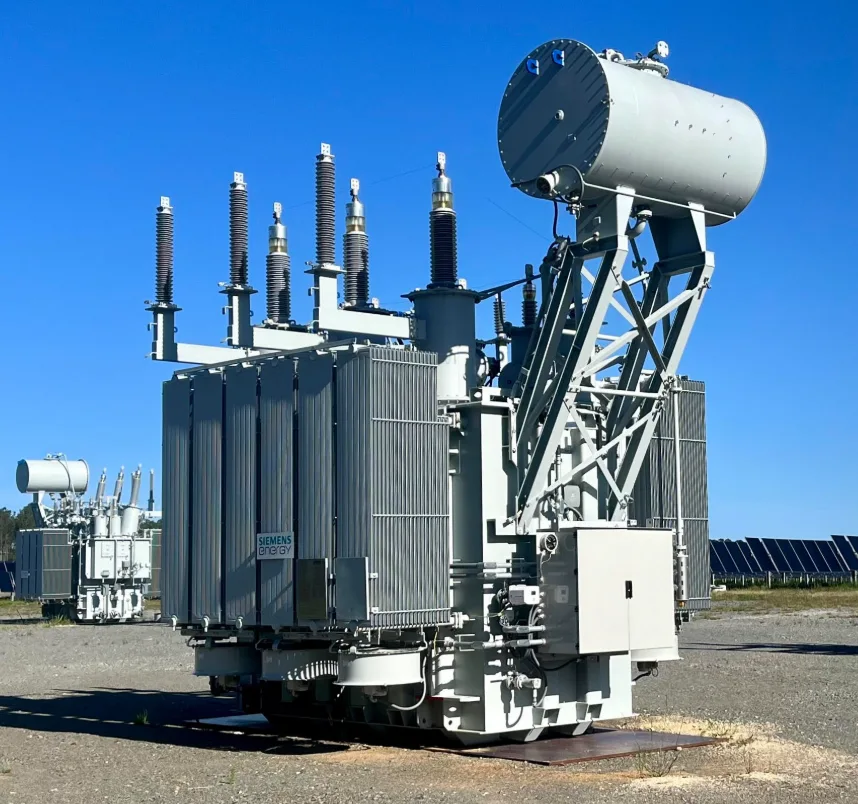Pagdating sa mga electrical power system, ang pagpili ng materyal na konduktor ay maaaring gumawa o masira ang pagganap. Habang tanso kumpara sa pilak na electrical conductivity ay kumakatawan sa isa sa pinakamahalagang paghahambing sa electrical engineering, ang pag-unawa sa kung paano gumaganap ang mga materyales na ito sa iba't ibang power application ay mahalaga para sa pinakamainam na disenyo ng system.
Bottom Line Up Front: Ang pilak ay may pinakamataas na electrical conductivity sa 63 x 10^6 siemens/meter (humigit-kumulang 7% na mas mataas kaysa sa copper), ngunit ang copper's 59 x 10^6 siemens/meter conductivity, na sinamahan ng superior cost-effectiveness at durability, ay ginagawa itong mas pinili para sa karamihan ng mga power application.
Pag-unawa sa Electrical Conductivity: Ang Pundasyon ng Power Systems
Ang electrical conductivity ay sumusukat kung gaano kahusay ang isang materyal na nagsasagawa ng electric current, na may mas mababang resistivity na nagbibigay-daan sa mas madaling magagamit na daloy ng electric charge. Parehong mahusay ang tanso at pilak sa lugar na ito, ngunit malaki ang pagkakaiba ng kanilang mga aplikasyon batay sa mga praktikal na pagsasaalang-alang.
Pangunahing Conductivity Facts:
- Silver conductivity: 63 x 10^6 siemens/meter
- Copper conductivity: 59 x 10^6 siemens/meter
- Ang tanso ay regular na pinipino sa 99.98% na kadalisayan para sa mga electrical application
Power Transmission at Distribution Systems
High-Voltage Power Lines
Ang copper building wire ay nangangailangan ng mas kaunting insulation at mas maliit na conduit kaysa sa aluminum dahil sa superyor nitong conductivity, na nagpapahintulot sa mas maraming copper wire na magkasya sa isang partikular na conduit. Sa mga aplikasyon ng transmisyon sa ilalim ng lupa, ang tanso ay ang ginustong materyal na konduktor para sa mga linya ng transmisyon sa ilalim ng lupa na tumatakbo sa mataas at napakataas na boltahe hanggang 400 kV dahil sa mas mataas nitong volumetric na electrical at thermal conductivity.
Bakit Nangibabaw ang Copper sa Power Distribution:
- Ang superior na thermal conductivity (60% na mas mahusay kaysa sa aluminyo) ay nakakatipid ng enerhiya at nagpapabilis sa pag-alis ng init
- Ang mga mahuhusay na katangian ng creep ay nagpapaliit sa pagkaluwag sa mga koneksyon
- Ang tansong oksido ay nagsasagawa rin ng kuryente, na pumipigil sa sobrang init ng koneksyon
Pagbuo ng mga Sistemang Elektrisidad
Number 12 (AWG) copper wire ay ang pinakakaraniwang sukat na ginagamit para sa mga branch circuit wiring sa mga gusali. Ang pagiging maaasahan ng materyal ay ginawa itong pamantayan sa industriya, na may mga copper wiring na sumusunod sa bawat code, ordinansa at regulasyon para sa mga electrical conductor sa buong Estados Unidos.
Limitadong Papel ni Silver: Habang ang pilak ay nag-aalok ng mas mataas na kondaktibiti, ang gastos nito ay nagbabawal sa malawakang paggamit sa mga sistema ng gusali. Ang tendensya ng Silver na mag-oxidize at mawalan ng kahusayan bilang isang electrical conductor, kasama ng medyo maliit na pagtaas sa conductivity, ay ginagawang mas sensible ang tanso para sa karamihan ng mga sitwasyon.
Mga Aplikasyon ng Renewable Energy
Mga Sistema ng Solar Power
Ang tanso ay gumaganap ng mas malaking papel sa renewable energy generation kaysa sa conventional thermal power plants, na may mga renewable na teknolohiya na nangangailangan ng apat hanggang anim na beses na mas maraming tanso bawat naka-install na MW. Gayunpaman, ang pilak ay gumaganap ng isang mahalagang espesyal na papel sa mga solar panel mismo.
Pilak sa Photovoltaics:
- Ang pilak ay angkop na angkop sa mga solar panel dahil sa napakahusay nitong electrical at thermal conductivity
- Ginagamit ang silver paste sa mga photovoltaic cell, na may mataas na conductivity na nagbibigay-daan sa mahusay na pagkolekta at paghahatid ng solar energy
- Ang mga potensyal na kapalit na metal ay hindi maaaring tumugma sa pilak sa mga tuntunin ng output ng enerhiya sa bawat solar panel
Copper sa Solar Imprastraktura:
Karaniwang ginagawang kuryente ng mga solar cell ang 20% ng insidente ng sikat ng araw, na may mga solar cell na may tansong contact na silicon na umuusbong bilang mahalagang alternatibo sa pilak bilang ang gustong materyal na conductor upang mabawasan ang mga gastos.
Sistema ng Enerhiya ng Hangin
Ang karamihan sa paggamit ng tanso sa buong mundo ay para sa mga de-koryenteng mga kable, kabilang ang mga coil ng mga generator at motor. Ang mga wind turbine ay nangangailangan ng malawak na mga kable ng tanso para sa:
- Mga windings ng generator
- Mga kable ng paghahatid ng kuryente
- Mga sistema ng kontrol
- Imprastraktura ng koneksyon sa grid
Mga Aplikasyon sa Automotive at Electric Vehicle
Mga Tradisyunal na Sistema ng Sasakyan
Kasama sa mga aplikasyon ng copper wire para sa industriya ng sasakyan ang aftermarket na mga de-koryenteng bahagi, mga cable ng baterya at mga istasyon ng pagcha-charge, mga produkto ng shielding, mga busbar para sa mga interconnect ng baterya ng EV, at mga airbag.
Rebolusyon ng Sasakyang Elektrisidad
Ang industriya ng automotive ay kumakatawan sa isang lumalagong larangan ng digmaan sa pagitan ng tanso at pilak na mga aplikasyon:
Silver sa mga EV:
- Ang mga bateryang de-kuryenteng sasakyan ay naglalaman ng hanggang dalawang beses na mas maraming pilak kaysa sa mga sasakyang pinapagana ng ICE
- Pinapahirapang palitan ng napakahusay na mga katangian ng kuryente ng Silver sa malawak at lumalagong hanay ng mga automotive application
- Ang mga istasyon ng pagsingil ay inaasahang hihingi ng mas malaking pilak
Copper sa EV Infrastructure:
- Ang mga hybrid na kotse at SUV ay gumagamit ng mga copper-wound induction motor na kumukuha ng kapangyarihan mula sa mga baterya
- Ang mga copper rotor motor ay ginagamit sa mga sasakyang Tesla, na ang all-electric roadster ay nakakakuha ng 0-60 mph sa loob ng 3.7 segundo
Electronics at Telecommunications
Mga High-Frequency na Application
Ang mataas na gastos ng Silver kasama ang mababang lakas ng tensile nito ay naglilimita sa paggamit nito sa mga espesyal na aplikasyon, tulad ng magkasanib na plating at sliding contact surface, at plating para sa mga conductor sa mga de-kalidad na coaxial cable na ginagamit sa mga frequency na higit sa 30 MHz.
Ang Espesyal na Papel ng Electronics ni Silver:
- Karaniwang ginagamit ang pilak bilang bahagi sa mga espesyalidad na electronics at sensitibong mga sistema, tulad ng pang-industriya na grade switch at mga contact sa sasakyan
- Nakahanap ang Silver ng makabuluhang aplikasyon sa mga sensitibong electronics, lalo na sa mga medikal na device at aerospace engineering kung saan kritikal ang pagiging maaasahan at pare-parehong pagganap
Imprastraktura ng Telekomunikasyon
Habang ang fiber optic ang pumalit sa telekomunikasyon, ang mga copper wire ay ginagamit pa rin para sa High Digital Subscriber Line (HDSL) at Asymmetrical Digital Subscriber Lines (ADSL).
Mga Aplikasyon sa Pang-industriya at Aerospace
Mga Kinakailangang Mataas ang Pagganap
Ang wire plated na may nickel o silver ay kadalasang ginagamit sa aerospace, defense, petrochemical, nuclear, at mga medikal na aplikasyon. Ang mga industriyang ito ay inuuna ang pagganap kaysa sa mga pagsasaalang-alang sa gastos.
Advanced na Paggawa:
Ang additive na pagmamanupaktura ng custom na copper at silver windings ay nag-aalok ng mga pagkakataon upang sabay na mapabuti ang kahusayan sa pamamagitan ng mga na-optimize na materyales, custom na geometries, at pinagsamang mga diskarte sa pamamahala ng thermal.
Mga Aplikasyon ng Motor
Ang mga high-efficiency na motor ay mas episyente sa karamihan dahil ang mga ito ay ginawa gamit ang mas maraming tanso, at mas tumatagal din ang mga ito at gumagawa ng mas kaunting init. Kung ang bawat planta sa Estados Unidos ay mag-upgrade ng kanilang mga sistema ng motor, ang industriya ng Amerika ay makakatipid ng $1 bilyon taun-taon.
Pagsusuri sa Gastos-Pagganap
Mga Pagsasaalang-alang sa Ekonomiya
Mayroong higit na natural na nagaganap na tanso kaysa sa pilak na magagamit sa Earth, na ginagawang mas mahal ang paggawa ng mas bihirang, mas mahusay na gumaganap na metal.
Paghahambing ng Praktikal na Paglaban:
Ang pagkakaiba sa resistensya ng 24-gauge, 1000-foot-long silver at copper wire ay nagpapakita na ang tansong wire ay may 2 ohms na mas mataas na resistensya.
Pangmatagalang Halaga
Sa buong buhay ng iyong system, ang napakahusay na pagganap at pagiging maaasahan ay isinasalin sa tunay na ekonomiya, na ginagawang tanso ang halos palaging ang pinaka-epektibong materyal na mga wiring na magagamit.
Mga Umuusbong na Teknolohiya at Mga Trend sa Hinaharap
5G at Advanced na Komunikasyon
Nakatakdang maging isa pang malaking driver ng silver demand ang teknolohiya ng 5G, na may mga bahaging nangangailangan ng pilak kabilang ang mga semiconductor chips, paglalagay ng kable, microelectromechanical system (MEMS), at Internet of things (IoT)-enabled na device.
Advanced na Imbakan ng Enerhiya
Ang mga sistema ng pag-iimbak ng enerhiya ay magbibigay-daan para sa pagbabago ng oras at peak shaving ng supply at demand ng kuryente, na nangangailangan ng malawak na imprastraktura ng tanso.
Mga Alituntunin sa Pagpili ng Materyal
Kailan Pumili ng Copper
Pumili ng tanso para sa:
- Transmisyon at pamamahagi ng kuryente
- Pagbuo ng mga de-koryenteng sistema
- Motor windings at pang-industriya na kagamitan
- Mga application na sensitibo sa gastos
- Long-distance power carrying
Kailan Pumili ng Pilak
Isaalang-alang ang pilak para sa:
- Mga application na may mataas na dalas na higit sa 30 MHz
- Katumpakan ng mga elektronikong bahagi
- Medikal at aerospace application
- Paggawa ng solar panel
- Mga kritikal na automotive electrical contact
Konklusyon: Paggawa ng Tamang Pagpili
Ang pagpili sa pagitan ng tanso at pilak sa mga aplikasyon sa pangangasiwa ng kuryente sa huli ay nakasalalay sa pagbabalanse ng mga kinakailangan sa pagganap laban sa mga realidad sa ekonomiya. Para sa karaniwang mga kable ng kuryente sa mga bahay at appliances, ang bahagyang mas mababang conductivity ng tanso ay kadalasang ganap na katanggap-tanggap at hindi nakahahadlang sa daloy ng kuryente.
Mga Pangunahing Takeaway:
- Ang tanso ay nananatiling workhorse para sa karamihan ng mga power application dahil sa pinakamainam nitong balanse ng conductivity, gastos, at tibay
- Ang pilak ay nangunguna sa mga espesyalisado, mataas na pagganap ng mga application kung saan ang 7% conductivity advantage nito ay nagbibigay-katwiran sa mas mataas na gastos
- Ang paglipat ng nababagong enerhiya ay nagtutulak ng mas mataas na pangangailangan para sa parehong mga materyales
- Ang mga teknolohiya sa hinaharap ay malamang na mangangailangan ng estratehikong paggamit ng parehong mga materyales sa iba't ibang bahagi ng system
Ang pag-unawa sa mga materyal na katangian at mga lugar ng aplikasyon ay nagsisiguro ng pinakamainam na disenyo ng system kung nagtatrabaho ka man sa mga residential wiring, renewable energy system, o cutting-edge electronics. Ang susi ay ang pagtutugma ng mga materyal na kakayahan sa mga partikular na kinakailangan sa pagganap habang isinasaalang-alang ang pangmatagalang pang-ekonomiya at pagpapatakbo na mga kadahilanan.






